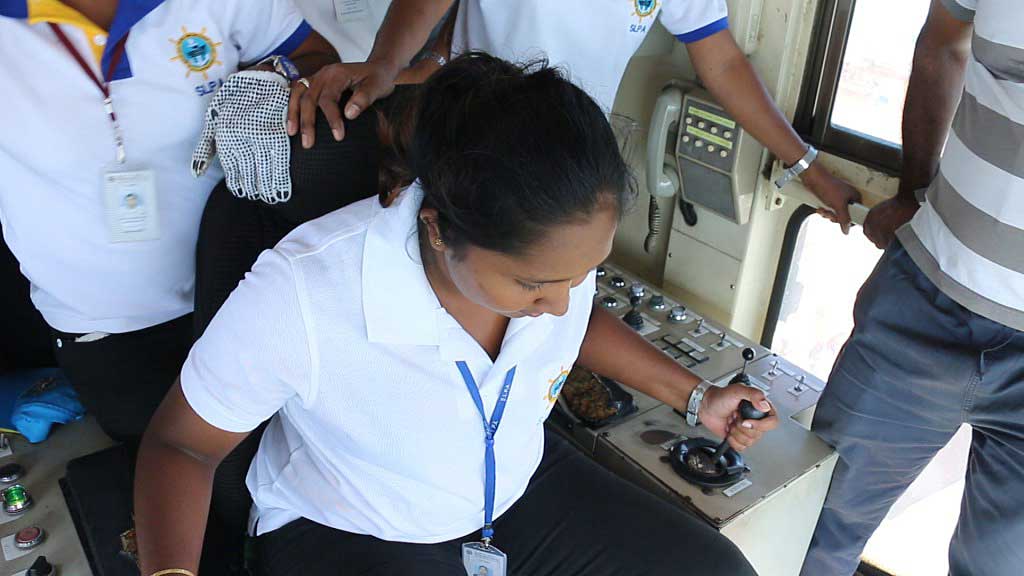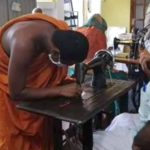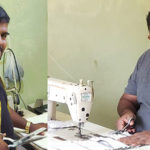Ladies First:
Sri Lanka Trains First Female Gantry Crane Operators
An initiative by the Sri Lankan Ports Authority will see 12 local women trained as gantry crane operators by International Women’s Day on March 8. It’s a job usually done by men.
Currently a group of 12 young Sri Lankan women, drawn from all over the country, are at the Mahapola Training Institution run by the Sri Lanka Ports Authority, training to operate gantry cranes. The Mahapola Training Institution is a school for maritime workers, located very near to the bustling Port of Colombo. It’s a first for Sri Lanka and most likely, also a first for this part of Southeast Asia. There are female crane operators in Hong Kong, Papua New Guinea and even Abu Dhabi – but none in this part of the world.
The young women are here thanks to Ranjith Sepala, the Chief Training Manager at the Mahapola Institute. They were selected after an awareness-raising conference that he arranged in August 2016, during which women working in non-traditional roles talked to attendees about their careers. This included Sri Lankan female pilot, Hiruni Gunasekera, Sri Lanka’s first female luxury bus driver, Lakshi Sachintha, and Sri Lanka’s first female ranking maritime officer, Banuka Lasanthi.
/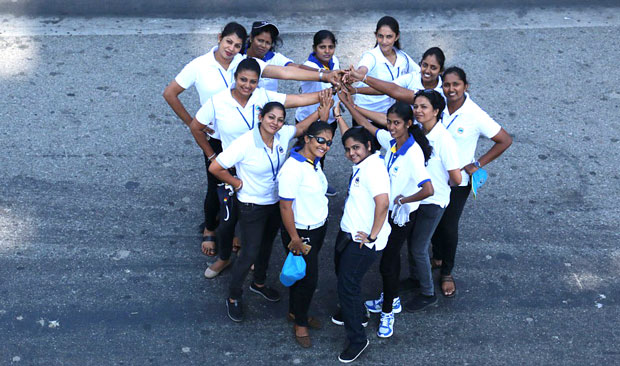 “These three women have won over sky, sea and land,” Sepala explains. “After they shared their experiences, I asked the women there if anybody wanted to be trained as a gantry crane operator and if so, they should raise their hands.”
“These three women have won over sky, sea and land,” Sepala explains. “After they shared their experiences, I asked the women there if anybody wanted to be trained as a gantry crane operator and if so, they should raise their hands.”
This is how the 12 trainees came to be accepted for the training and they are doing well, having completed just over half of the necessary courses, Sepala says.
“Society has this opinion that this job should only be done by strong men,” he continues. “But we have changed this opinion. Commitment, attention to detail, patience and mindfulness are the qualities required to operate a gantry crane. The whole world agrees that women are good at multi-tasking. In fact, the women are even ahead of the male trainees in some areas, when it comes to working methodically, with rules and hygienically.”
The job can look frightening from a distance. A gantry crane is one of the biggest used at any port and the operator sits in a cab on the top end of the crane, usually over 100 feet above the ground. It can be a risky job too, as there are a variety of safety factors to consider, including operating the machinery with precision, ensuring communication between ship and shore and dealing with various vagaries, such as overloading and weighting of the crane.
/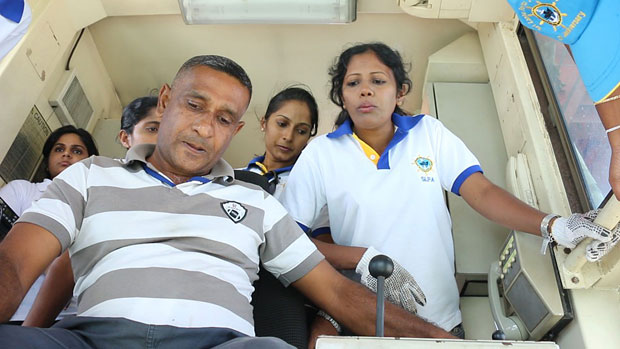
Basic training is done on a simulator, firstly using a computer and then using a model of a ship. None of the women had ever done this kind of work before and as one remarked, “I had never even climbed up a gantry crane before. When I first went up, my legs were shaking so much!”
After the women are trained, they will be qualified to work anywhere in the world as gantry crane operators. However most of them say they will stay in Sri Lanka to do the job.
Nugegoda Erandi says she will try and gain further training in maritime work after she’s finished while Dilki Nadesha, originally from Athurugiriya near Colombo, and Beruwala Poojani Dilki say they want to work for the port authority and return the favour it has done them by providing this training. Two other women, Kuliyapitiye Nelum Soysa and Biyagama Chaturangi Perera, say that the training has broadened their horizons and they like the idea of helping Sri Lanka earn foreign exchange through maritime trade.
The women’s training is scheduled to end this month and they are expected to be fully qualified on March 8, which, rather appropriately, is International Women’s Day this year.
Photography by Ajith Seneviratne
/